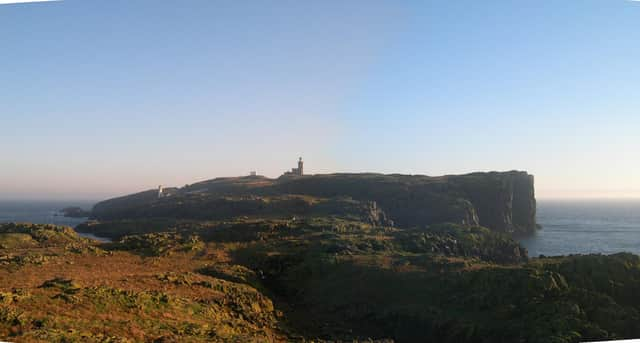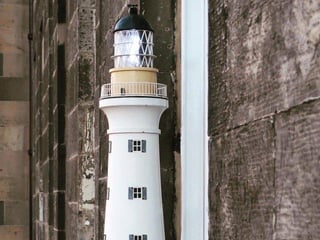The island lighthouse baby: An incredible story of survival


It was January 1791 and the lighthouse keepers on the Isle of May had a job on their hands. A storm raged through the Firth of Forth with the strength of the gale forcing the assistant keepers to abandon the light that guided boats in and out of the mouth of the estuary.
The coal brazier that lit the beacon was extinguished but the wind picked up the discarded coal ash and deposited it into the little rooms in the lighthouse tower, filling them with smoke.
Advertisement
Hide AdAdvertisement
Hide AdAsleep on the second floor was lighthouse keeper George Anderson, his wife and six children, unaware of the silent threat that surrounded them as the storm raged through that Sunday night.
Most were not to wake again.
By Monday morning, it was noted by some from afar that the lighthouse light was not working which was highly unusual given the storm that still swilled in from the North Sea.
By Wednesday, a fully-crewed rescue boat made its way out to the island, which sits around five miles from the Fife coast.
The assistant light keepers were found alive but most of the Anderson family were found dead where they had slept. That is, apart from the youngest child Lucy, who was found still at the breast of her mother, who had passed away during the night.
Susan Ciccantelli, a descendant of George Anderson, wrote in an earlier blog for National Museum of Scotland about the discovery of her family on the Island of May.
She said: “The assistant keepers were found alive, but dizzy from the coal fumes. The discovery of the family, mostly all of them perished, must have been a grim one.
“But nestled under the covers, barely alive at her mother’s breast, was little Lucy. “
It is understood that Lucy was taken back to shore with some reports suggesting that she was raised in Anstruther by the family of one of her rescuers, Henry Dowie.
Advertisement
Hide AdAdvertisement
Hide AdWhat is known for certain is that she later married Henry Dowie with the couple emigrating to the United States in 1811.
They left Scotland with the first three of their 12 children in tow.
Out of the tragedy of the Anderson family came many new beginnings and successes.
On arrival in the United States, the Dowie family settied in Andes, New York, which was then a brand new village built by prominent Scottish family, the Livingstons of Callendar, whose family line includes George H W Bush and his son, the former presidents of the United States.
In Andes, Henry Dowie made a successful career in business and local government, Ms Ciccantelli, the great, great, great granddaughter of the couple, said.
The youngest daughter of Henry and Lucy’s children was called Sarah and became a school teacher, travelling on horseback to get to her students. She married a Presbyterian minister and had five children.
Ms Ciccantelli said she and her cousins were told of the lighthouse story as children but got interested in her family history later in life, particlarly after her own son was born.
As part of her research, she eventually found the family grave in Andes.
Advertisement
Hide AdAdvertisement
Hide AdThe inscription on the grave reads: “To the memory of OUR MOTHER, Lucy Anderson, wife of Henry Dowie.
“Born on the Isle of May, in the Frith of Forth, Scotland; where ... her parents and their entire family met an awful death from suffocation.
“She alone, by a special providence was preserved, and was found three days after the fatal event, alive and sucking the corpse of her mother. God in His infinite mercy preserved her, and in His goodness blessed her with a disposition in which every female virtue shown preeminently; a pattern of piety, of patience in affliction.”
Lucy died on January 5, 1845, aged 54 years, 10 months, 20 days.
Ms Ciccantelli said many mysteries surrounding the lives of Lucy and Henry still needed resolved.
“She had two older sisters, possibly married and living in Fife, who were not in the lighthouse that night. Where is her Scottish family buried? Probably, I think, on the May, but there is no proof of this. How did Henry ‘connect’ with her again?
“And where are all my fellow descendants of their many other children here on this side of the ‘pond?,” she wrote.
Ms Ciccantelli has visited the Island of May and hopes to return for an extended stay in January, the month when the lives of the Anderson family changed irrevocably.
“I would love to experience the May as it was, that fateful night in 1791,” she said.
Ms Ciccantelli’s original article appeared on the National Museum of Scotland blog.
